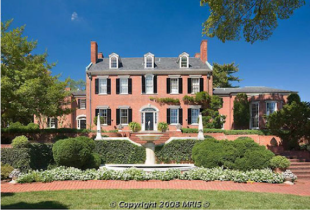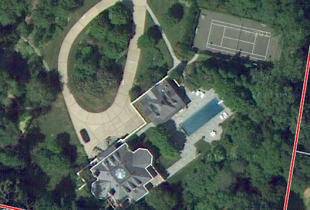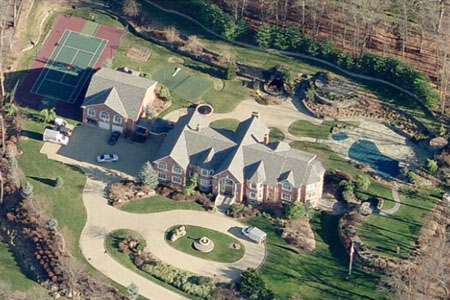-Washington Post
President Obama has directed a small team of advisers to develop a proposal that would keep the government playing a major role in the nation’s mortgage market, extending a federal loan subsidy for most home buyers, according to people familiar with the matter.
The decision follows the advice of his senior economic and housing advisers, who favor maintaining the government’s role as an insurer of mortgages for most borrowers. The approach could even preserve Fannie Mae and Freddie Mac, the mortgage finance giants owned by the government, although under different names and with significant new constraints, said people knowledgeable about the discussions.
A decision to preserve a major government role would mark a big milestone in the effort to craft a new housing policy from the wreckage of the mortgage meltdown and could mean a larger part for Fannie and Freddie than administration officials had signaled.
In a statement, the White House said it is premature to say that senior officials have agreed on any of the three main options outlined earlier this year in an administration white paper on reforming the housing finance system.
“It is simply false that there has been a decision to move forward with any particular option,” said Matt Vogel, a White House spokesman. “All three options remain under active consideration and we are deepening our analysis around how each would potentially be implemented. No recommendation has been made to the president by his economic advisers.”
The proposal is likely to draw criticism from many Republicans, who blame the financial crisis on policies they say overly encouraged the housing market. And many economists, including some who have worked in the White House under Obama, consider the federal role harmful to the free market.
But if this approach became law, it probably would keep in place the kind of popular home loans that have been around for decades — 30-year fixed-rate mortgages with relatively low interest rates.
Officials have not determined whether to advance a final proposal before the 2012 presidential election. Officials from the White House, the Treasury Department and the Department of Housing and Urban Development are working out the details.
The government could maintain a substantial role in various ways. These include restructuring Fannie and Freddie as public utilities overseen by a government regulator. The government would no longer guarantee their financial health, as in the past, but would continue to backstop the mortgage-backed securities they issue using loans made by private banks.
Or the two companies could be shut down and replaced with several successors that, likewise, would have their mortgage-backed securities guaranteed by the government in exchange for a fee. A federal guarantee, by reducing the risk to investors, can make it cheaper for firms to raise money for making home loans, in turn reducing mortgage rates.
For years, Fannie and Freddie — shareholder-owned companies chartered by Congress to support the housing market — owned or insured trillions of dollars in home loans. When the housing market crashed, the government seized the firms, and it has spent more than $150 billion propping them up.
Since then, Fannie and Freddie have played a key role in ensuring the availability of mortgages amid the market upheaval. But the Obama administration has said it wants to scale back the federal role.
In weighing whether to preserve Fannie and Freddie, administration officials have several concerns, said people familiar with the discussions. They spoke on the condition of anonymity because the talks are still preliminary.
The firms spent decades developing a market in which investors worldwide can buy and sell securities backed by U.S. home loans, and administration officials don’t want to jeopardize it.
In addition, officials don’t want to punish the thousands of Fannie and Freddie employees who have specialized knowledge about the mortgage market and had nothing to do with the poor business decisions top executives made in the run-up to the financial crisis.
But some critics warn that nearly any government role could leave taxpayers on the hook.
“The long-term consequence is that the taxpayers ultimately have to bail out the government’s losses,” said Peter Wallison, a fellow at the American Enterprise Institute. He added, “There is only one legitimate role for government in guaranteeing mortgages: That is mortgages for low-income people, to enable them to buy homes.”
Under the approach Obama endorsed, the government would seek to limit the exposure of taxpayers. Fannie, Freddie or other successor firms would charge a fee to mortgage lenders and banks and use the money to create an insurance pool to cover losses on mortgage securities caused by defaults on the underlying loans. The government would be the last line of defense in case of another housing market meltdown, using taxpayer money to cover losses only if the insurance pool ran dry.
Some special advantages awarded to Fannie and Freddie would be eliminated, according to people familiar with the matter. For example, the two companies were allowed for decades to do business while holding a fraction of the reserves — essentially, rainy-day money — that banks and other financial firms were required to hold. This advantage allowed Fannie and Freddie to grow very large. The companies, or the firms that replace them, would have to start holding much more in reserve.
The administration’s strategy also would require Fannie and Freddie, if they remain in some form, to shed many of the mortgages they own. Their loan portfolios, which have ballooned recently, would shrink greatly over coming years and perhaps be eliminated. Private firms would have to fill the void.
“We remain committed to winding down Fannie and Freddie, though such significant measures would need to be done gradually and with care,” said Vogel, the White House spokesman. “We believe that it is essential to bring private capital back to the center of a reformed housing system.”
Although banks would be able to make any home loans they wanted, only those that met federal standards would be eligible to be included in securities assembled by Fannie, Freddie or successor companies. And only those securities would have a government guarantee.
Any effort to remake the nation’s housing finance system would be phased in over five to 10 years.
Since early in his tenure, Obama has promised to offer a proposal to overhaul the nation’s housing finance system.
In February, the administration released a long-awaited white paper discussing an overhaul of the housing finance system. The paper called for the end of Fannie and Freddie but did not say what should replace them.
Three options were presented. The first two called for greatly reducing the federal role in the mortgage market, perhaps eliminating it. A third option called for largely maintaining the government’s footprint but introducing several changes to reduce the chances that another taxpayer bailout would be needed.
(All of the options preserved the Federal Housing Administration, a government agency that helps low- and middle-income and minority home buyers.)
The administration’s decision in February to release a series of options — and not make a formal recommendation — reflected a political calculation and a disagreement among Obama’s advisers.
Two top Obama advisers, HUD Secretary Shaun Donovan and Treasury Secretary Timothy F. Geithner, think the government should maintain an outsize role in the housing market, administration officials said.
Donovan thinks federal support for housing fulfills a public service, while Geithner has been focused on the need for the government to have a way to keep the mortgage market operating during a financial crisis.
Other advisers, however, opposed a continued government role over the long run. Austan Goolsbee, who this month left his job as chairman of Obama’s Council of Economic Advisers, argued that the federal role in housing distorts the free market. By subsidizing mortgage investments, he argued, the government drives capital away from other types of investments — for example, those in companies developing environmentally friendly technology. He also warned that the government is putting enormous sums of taxpayer money on the line while conveying little actual benefit to home buyers.
In a meeting with the president, Goolsbee said that the government had finally brought Fannie and Freddie’s excesses to heel by taking over the companies and that it would be a mistake to let them loose in the market again, said a person familiar with the meeting. Goolsbee likened the companies to a villain held in a special prison who shouldn’t be freed just because he promises to help the poor, the source recounted.
Lawrence H. Summers, who was director of the National Economic Council until early this year, argued that, over the long term, it didn’t make sense to have a government-backed agency providing guarantees to the mortgage market but that Fannie and Freddie still play a crucial role.
“My position was that we needed to maximize activity in the short run to support the housing market,” Summers said in an interview. “Discussions of scaling down Fannie and Freddie were vastly premature under the circumstances of a collapsing housing market.”
After a decade or so, he added, the government role might be phased out. He cautioned that models similar to Fannie and Freddie “were problematic because they were likely to lead to the same type of abuses” that Fannie and Freddie engendered.
Gene Sperling, who became director of the National Economic Council this year, shepherded the release of the white paper. He agreed that a continued government guarantee made sense.
In the end, Obama signaled agreement. The White House, however, says the president has not made a final decision.
appraisal services, appraisal management company, coester appraisal, fha minimum property standards, best appraisal management company, reverse mortgage appraisal companies, property tax appeal












 -0.001 (0%)
-0.001 (0%)  7.20 (+0.4%)
7.20 (+0.4%) 


























